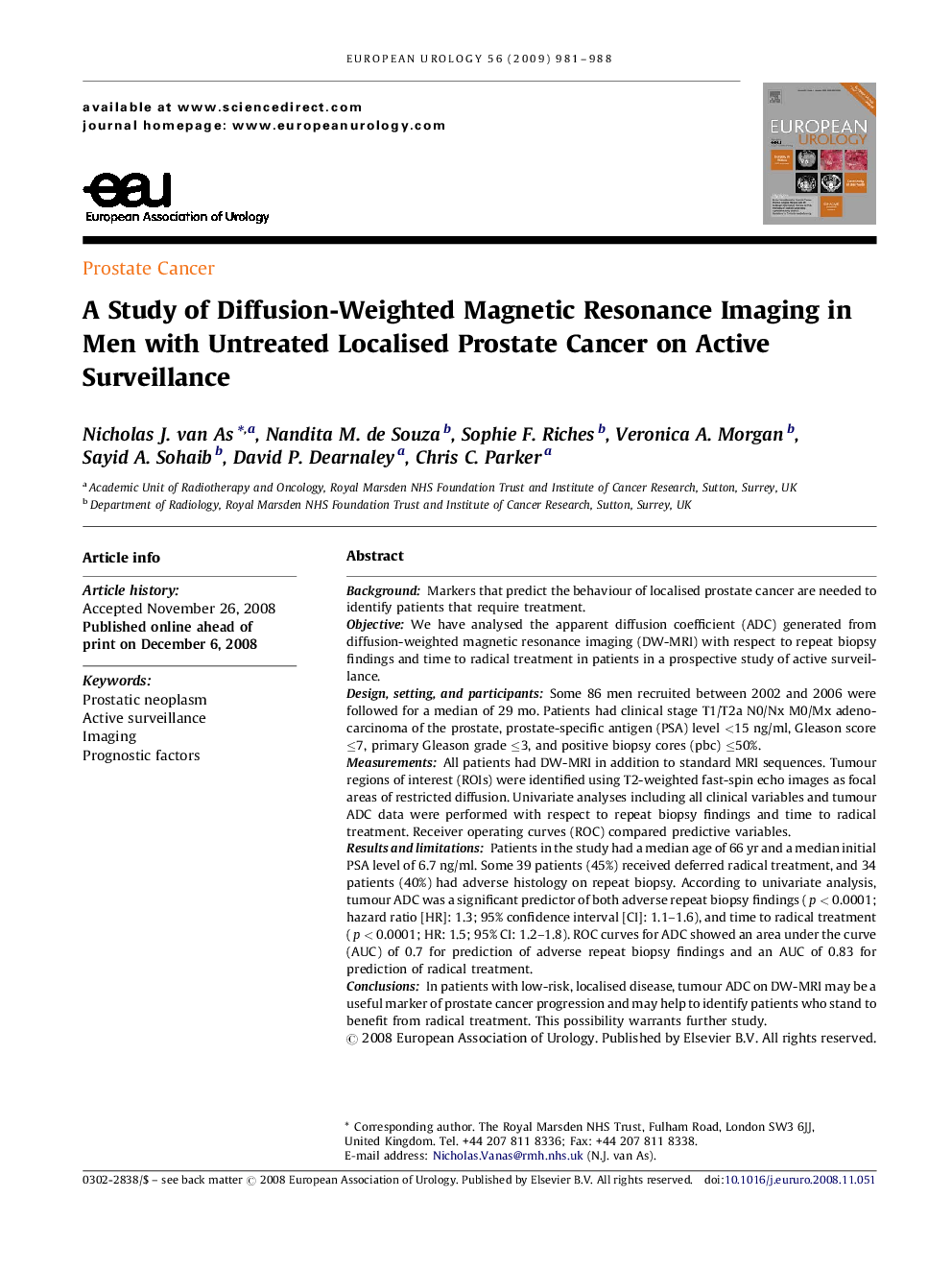| Article ID | Journal | Published Year | Pages | File Type |
|---|---|---|---|---|
| 3924633 | European Urology | 2009 | 8 Pages |
BackgroundMarkers that predict the behaviour of localised prostate cancer are needed to identify patients that require treatment.ObjectiveWe have analysed the apparent diffusion coefficient (ADC) generated from diffusion-weighted magnetic resonance imaging (DW-MRI) with respect to repeat biopsy findings and time to radical treatment in patients in a prospective study of active surveillance.Design, setting, and participantsSome 86 men recruited between 2002 and 2006 were followed for a median of 29 mo. Patients had clinical stage T1/T2a N0/Nx M0/Mx adenocarcinoma of the prostate, prostate-specific antigen (PSA) level <15 ng/ml, Gleason score ≤7, primary Gleason grade ≤3, and positive biopsy cores (pbc) ≤50%.MeasurementsAll patients had DW-MRI in addition to standard MRI sequences. Tumour regions of interest (ROIs) were identified using T2-weighted fast-spin echo images as focal areas of restricted diffusion. Univariate analyses including all clinical variables and tumour ADC data were performed with respect to repeat biopsy findings and time to radical treatment. Receiver operating curves (ROC) compared predictive variables.Results and limitationsPatients in the study had a median age of 66 yr and a median initial PSA level of 6.7 ng/ml. Some 39 patients (45%) received deferred radical treatment, and 34 patients (40%) had adverse histology on repeat biopsy. According to univariate analysis, tumour ADC was a significant predictor of both adverse repeat biopsy findings (p < 0.0001; hazard ratio [HR]: 1.3; 95% confidence interval [CI]: 1.1–1.6), and time to radical treatment (p < 0.0001; HR: 1.5; 95% CI: 1.2–1.8). ROC curves for ADC showed an area under the curve (AUC) of 0.7 for prediction of adverse repeat biopsy findings and an AUC of 0.83 for prediction of radical treatment.ConclusionsIn patients with low-risk, localised disease, tumour ADC on DW-MRI may be a useful marker of prostate cancer progression and may help to identify patients who stand to benefit from radical treatment. This possibility warrants further study.
